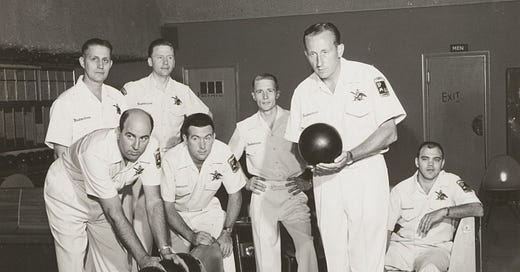Steeped in History, Bowling Keeps Rolling
Behind the neon-lit recreation, 2 million leaguers and the PBA Tour
Don Carter holding a ball is shown with his Budweiser Bowling Team (circa late 1950s). Carter was the first athlete of any sport to sign a $1 million contract with a corporate sponsor (Ebonite).
“Bowling has been a great American pastime for well over 100 years,” explains Tom Clark, Commissioner of the Professional Bowlers Association (PBA).
Founded in 1…
Keep reading with a 7-day free trial
Subscribe to Rmag to keep reading this post and get 7 days of free access to the full post archives.




